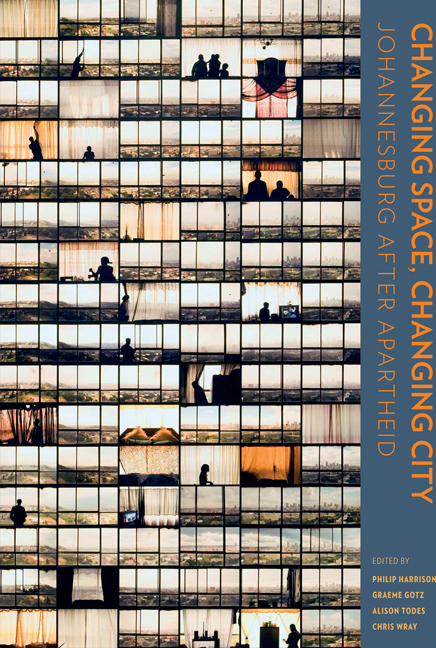Book contents
- Frontmatter
- Contents
- Preface
- Cartography
- 1 Materialities, subjectivities and spatial transformation in Johannesburg
- Section A The macro trends
- 2 The ‘thin oil of urbanisation’? Spatial change in Johannesburg and the Gauteng city-region
- 3 Poverty and inequality in the Gauteng city-region
- 4 The impact of policy and strategic spatial planning
- 5 Tracking changes in the urban built environment: An emerging perspective from the City of Johannesburg
- 6 Johannesburg's urban space economy
- 7 Changes in the natural landscape
- 8 Informal settlements
- 9 Public housing in Johannesburg
- 10 Transport in the shaping of space
- 11 Gated communities and spatial transformation in Greater Johannesburg
- Section B Area-based transformations
- Section C Spatial identities
- Contributors
- Photographic credits
- Acronyms
- List of plates
- List of figures
- List of tables
- Index
8 - Informal settlements
from Section A - The macro trends
Published online by Cambridge University Press: 20 April 2018
- Frontmatter
- Contents
- Preface
- Cartography
- 1 Materialities, subjectivities and spatial transformation in Johannesburg
- Section A The macro trends
- 2 The ‘thin oil of urbanisation’? Spatial change in Johannesburg and the Gauteng city-region
- 3 Poverty and inequality in the Gauteng city-region
- 4 The impact of policy and strategic spatial planning
- 5 Tracking changes in the urban built environment: An emerging perspective from the City of Johannesburg
- 6 Johannesburg's urban space economy
- 7 Changes in the natural landscape
- 8 Informal settlements
- 9 Public housing in Johannesburg
- 10 Transport in the shaping of space
- 11 Gated communities and spatial transformation in Greater Johannesburg
- Section B Area-based transformations
- Section C Spatial identities
- Contributors
- Photographic credits
- Acronyms
- List of plates
- List of figures
- List of tables
- Index
Summary
Informal settlements have formed an essential part of Johannesburg since its inception, to some extent shaping its growth, oft en being displaced by formal development but reemerging elsewhere. In this chapter we focus on the informal settlement situation within the municipal boundaries of the City of Johannesburg, and review changes in informal settlement over the past decade. While the city developed more nuanced data in 2012 and 2013, in part sparked by draft s of the research presented in this chapter, the official and political position on informal settlements in Johannesburg remains that this form of residence has been ‘mushrooming’ or ‘ballooning’. The official position is that as of 2013, over 189 such settlements exist in the city, of which around 50 are unsuited for in situ upgrading and require relocation.
The analysis presented in this chapter challenges political rhetoric, official data and the city's intervention programmes for informal settlements. Our call is for a more differentiated understanding of the situation, which may pave the way for more in situ upgrading. The City of Johannesburg increasingly acknowledges that the number of households living in informal settlements is a moving target, and that accurate data is unavailable. In 2013, the city was working on an assumption of a 20 per cent growth in the number of households in any informal settlement since its shack count of 2007, ‘unless “better” statistics exist’. However, the city's subsequent shack counts in individual settlements have shown that the 20 per cent growth is oft en an overestimate.
While informal settlements must remain an area of urgent attention, we present a picture that is less dramatic, where growth in informal settlements is mostly punctual (restricted to specific areas) and spatially follows the trends in formal upmarket residential expansion with its domestic employment demands. In addition, the City of Johannesburg's new geographic information systems (GIS) data and the 2011 Census (Stats SA 2012) data show higher growth in numbers of backyard shacks across the city than of shacks in informal settlements. As of 2012, it was estimated that there were 165 000 units in informal settlements as opposed to 320 800 backyard shack units as identifiable using aerial photography. This corroborates earlier findings that the growth in backyard rental had intensified across South African cities when compared to growth in informal settlements (SAIRR 2008).
- Type
- Chapter
- Information
- Changing Space, Changing CityJohannesburg after apartheid, pp. 154 - 175Publisher: Wits University PressPrint publication year: 2014



